20+ Common Faults of Jaw Crusher with Solutions
Jaw crusher is a mining mechanical equipment often used in crushing, sand making, beneficiation and other fields. Jaw crusher has large crushing ratio and strong crushing capacity, so it is often used as primary crushing equipment.
Jaw crushers are often subject to varying degrees of wear in work, so faults are inevitable. Here we summarize the 20+ common faults and solutions of jaw crushers.
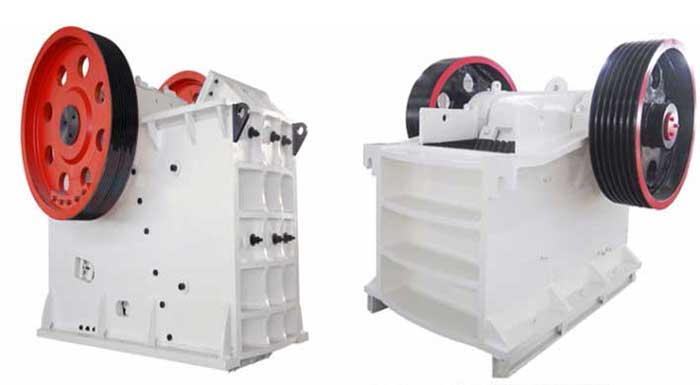
1. Bearing Damage
- Reason: Incomplete lubrication and untimely maintenance of bearings lead to poor lubrication;
- The impact of moving jaw caused by excessive feeding height is also the key factor of bearing damage.
- Solution: Timely carry out lubrication and maintenance according to the maintenance manual, use the specified lubricating grease, and fill the grease in time according to the specified process;
- Reasonably set the feeding height according to the feeding form to avoid the impact of material supply on the moving jaw.
2. The Bearing Temperature is Too High
- Reason: The fixation method of elbow plate is unreasonable;
- The lubricating grease does not meet the requirements, and the lubricating parts are lack of oil, resulting in friction during equipment operation and equipment overheating;
- The feeding particle size does not meet the requirements. For example, the material fineness has a certain impact on the wear of the bearing.
- Solution: Check the wear status of the bracket and bracket seat, and check the running speed of the crusher;
- Reasonably and effectively lubricate, formulate a reasonable inspection cycle, inspect the lubrication state and the state of the crusher;
- According to the operation of the crusher, determine the reasonable feeding speed and feeding particle size.
3. Lining Plate Fracture
- Reason: The size of the discharge port is too small, resulting in jamming;
- There are ironware entering the equipment.
- Solution: Adjust the discharge port to prevent material jam;
- Set blocking device to prevent iron block from entering the crusher.
4. Elbow Seat Eorn
Reason: The mixing of foreign matters leads to the wear of the elbow seat.
Solution: Clean up foreign matters at fixed points and regularly, and fill grease in time to lubricate the elbow seat to prevent foreign matters from mixing.
5. Elbow Plate Falling Off
- Reason: The size of feeding material is too large, resulting in impact and falling off;
- Insufficient spring tension;
- The unreasonable feeding position of the material causes the material to directly act on the upper jaw cover, resulting in the falling of the lining plate.
- Solution: The supply of materials shall be uniform, the size shall be reasonable and appropriate, the feeding position shall act on the rear wall of the hopper, and shall not directly impact the upper jaw cover;
- Adjust the reasonable spring tension.
6. Bending and Fracture of Elbow Plate
- Reason: Insufficient tension of tension spring;
- The particle size of the feed material does not meet the requirements;
- Foreign matters are stuck at the bottom of the crushing chamber;
- The installation of elbow plate is not standardized and unreasonable.
- Solution: Adjust the tension of the spring;
- Control of feeding size;
- Set the foreign matter jamming detection device in the crushing chamber to take out the miscellaneous iron or other foreign matters in time;
- The installation of the elbow plate shall meet the requirements of smooth and flat surface, and the maintenance of the elbow plate seat shall be in place and timely.
7. The Rack is Broken
- Reason: Rack overload;
- The force of the frame is uneven;
- The installation foundation of the rack is not solid.
- Solution: The feed quantity of the discharge port of the crusher needs to be fully uniform and not verloaded;
- Regularly carry out the inspection of the level of the rack, it is necessary to ensure that the force of the frame is uniform.
8. Adjusting Screw Damage
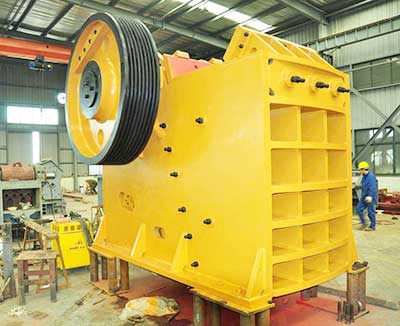 Reason: The main reason for the damage of the adjusting screw is the over-adjustment of the screw, and the crusher realizes the mutual locking of the stepless adjustment mode by adjusting the two screws on both sides at the same time.
Reason: The main reason for the damage of the adjusting screw is the over-adjustment of the screw, and the crusher realizes the mutual locking of the stepless adjustment mode by adjusting the two screws on both sides at the same time.
Solution: Screw adjustment work needs to meet the design requirements, must not be adjusted alone, otherwise the side will lead to uneven force and damage to the equipment.
9. Fracture of Tension Rod Under load
Reason: The tension rod spring fixing device is overtightened.
Solution: Set up a reasonable compression tension rod spring fixing device according to the requirements.
10. Feed Hopper Bolts Damaged
- Reason: Excessive feeding;
- The feed hopper is not coated with loctite.
- Solution: Adjust the reasonable supply of materials. The particle size and speed of the materials to be fed shall meet the required indicators of the equipment. In order to ensure the crushing capacity and crushing effect, the amount of materials to be fed is generally about 2 / 3 of the volume of the crushing chamber;
- Apply loctite.
11. Excessive Vibration
- Reason: Improper operation speed;
- The flywheel deviates from the main shaft, resulting in uneven stress and vibration.
- Solution: Adjust the operating speed of the crusher as required;
- Check the fastening state of the flywheel to prevent excessive vibration caused by loose flywheel.
12. The Running Speed of Crusher is Unstable
- Reason: The V-belt is loose or broken, resulting in changes in the operating parameters of the equipment;
- The elbow plates are not fixed in place, and the jaw plates collide with each other after loosening.
- Solution: Replace the V-belt in time;
- Check the wear of the bracket and bracket seat and the fastening state of the jaw bolt.
13. Jaw Plate Movement
- Reason: Loose jaw plate;
- Insufficient clearance;
- The adjusting wedge is worn.
- Solution: Tighten the jaw bolts;
- The reasonable gap between the upper and lower jaw plates is 5mm-8mm (3 / 16-5 / 16);
- Add friction between the small wedges in the cavity to reduce the mutual friction between the small wedges.
14. The Particle Size of the Finished Product Becomes larger
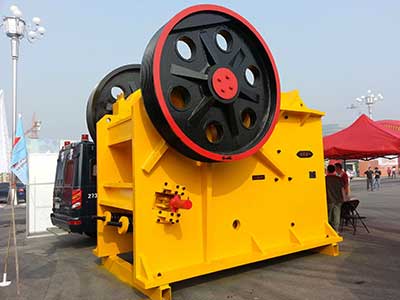 Reason: This problem often occurs when the jaw crusher is used for a long time. The main reason for the coarsening of the finished product particle size is the serious wear of the jaw plate, especially the part close to the blanking part.
Reason: This problem often occurs when the jaw crusher is used for a long time. The main reason for the coarsening of the finished product particle size is the serious wear of the jaw plate, especially the part close to the blanking part.
Solution: Adjust the ore discharge size, reduce the ore discharge size, or exchange the crushing toothed plate for 180 degrees.
15. Clamping, Tension Rod Spring Relaxation
Reason: The feed particle is too large or the jaw plate is loose, and the pull rod or pull rod spring is damaged.
Solution: Strictly control the feeding and timely replace the parts with serious wear.
16. The Flywheel Wwings Greatly
Reason: The connecting key between the belt pulley and the eccentric shaft is loose or damaged.
Solution: Replace relevant components, especially connectors.
17. Hot Rolling Bearing
Reason: The reason why rolling bearings are hot is mostly the problem of lubricating oil. Too little lubricating oil may also be the reason for too long running time.
Solution: Increase the corresponding amount of lubricating oil, replace the inferior lubricating oil, and strictly control the running time of the machine.
18. The Main Engine is Not Running
Reason: When the main engine does not operate after normal power transmission, the motor is burned or broken, or the belt pulley is loose.
- Solution: Conduct effective maintenance for the motor and fasten the pulley.
- Fault maintenance of jaw crusher
19. Shaking of Broken Toothed Plate Accompanied by Metal Impact Sound
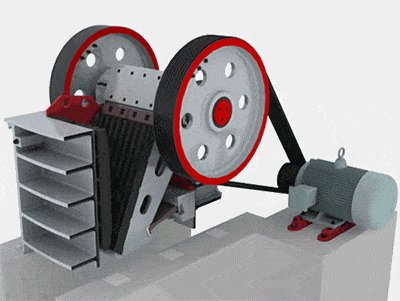 Reason: The broken toothed plate is loose, and the fixing bolt is loose or broken.
Reason: The broken toothed plate is loose, and the fixing bolt is loose or broken.
Solution: Repair the broken gear plate, tighten the fixing bolts or replace the damaged bolts.
20. Impact Sound Generated by Connecting Rod Device
Reason: The eccentric shaft bushing is worn.
Solution: Regrind or replace the bushing.
21. The Output Cannot Meet The Demand
- Reason: 1. The hardness or toughness of the material exceeds the optimal crushing range of the machine;
- 2. The power line of the motor is wrongly connected, resulting in the reverse rotation of the moving jaw and the wrong triangular connection of the motor power supply;
- 3. The size of the outlet of the broken jaw is lower than the specification;
- 4. The relative position of the teeth groove of the moving jaw and the fixed jaw is wrong;
- 5. The voltage is too low;
- 6. The clearance between the movable jaw and the fixed jaw is too large, resulting in the rotation of the outer ring of the bearing.
- Solution: 1. Replace with a new crusher of appropriate model;
- 2. Adjust wiring;
- 3. Adjust the size of the discharge port or add fineness according to the instructions;
- 4. Replace the jaw plate, adjust the position of the fixed jaw and the moving jaw, adjust the bite position of the tooth slot, and place the displacement;
- 5. Adjust the voltage in the plant;
- 6. Replace with new bearing and new movable jaw.
21. The Crusher Stopped Suddenly
- Reason: The crushing chamber and silo are blocked by materials;
- The V-belt is loose or slipping, and the motor cannot drive the sheave;
- The bushing of the eccentric shaft is loose and the eccentric shaft is stuck;
- The voltage is too low and the motor power is insufficient;
- The bearing of jaw crusher is damaged.

- Solution: After shutdown, remove the blockage in the discharge port and cavity to make the discharge port unblocked
- Tighten the V-belt of crusher motor or replace it with a new belt
- After disassembly, reinstall or replace the bushing according to the instructions
- Contact the power supply bureau or check the transformer to make the voltage reach the normal value
- Replace the bearing with a new one
22. The Crusher Operates Normally without Crushing
- Reason: The spring breaks;
- The pull rod is broken;
- The elbow plate falls off, is damaged or broken.
- Solution: Replace the spring with a new one;
- Replace the new pull rod;
- Install and replace the new elbow plate.
23. Fracture of movable jaw plate
- Reason: Quality problems of movable jaw plate;
- When the used elbow plate and elbow pad are unqualified, the elbow plate is not protected by self breaking when the crusher is crushing;
- The movable jaw plate is displaced, and one section collides with the guard plate;
- The pull rod spring is scrapped and not replaced in time;
- The size of the discharge port is lower than the specified minimum range;
- The position of the feed inlet is wrong, which is biased towards one end, and the blanking angle is too oblique, resulting in the material directly hitting the top of the movable jaw.
- Solution: Replace the movable jaw plate;
- Replace the original elbow plate and elbow pad of the crusher manufacturer;
- Correctly install the eccentric shaft, bearing, fixing bushing and moving jaw according to the steps in the manual, and replace the damaged parts in time;
- Replace the pull rod spring with a new one;
- Adjust the size of the discharge port according to the requirements of the manual;
- Add feed hopper to ensure stable and uniform feeding.
Finally, there are many precautions about the daily operation and maintenance of jaw crusher. You can read relevant articles.
 11 Common Faults of Sand Washer and Solutions
11 Common Faults of Sand Washer and Solutions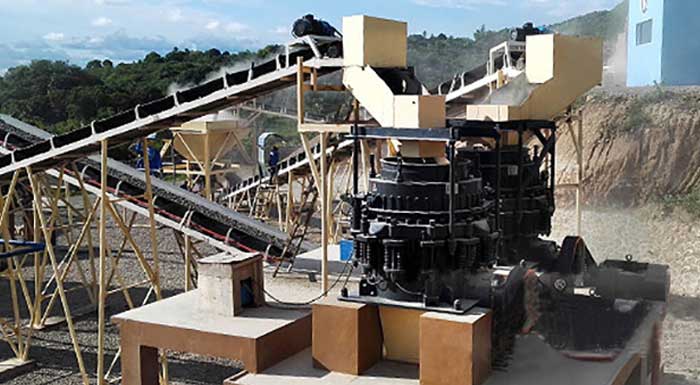 14 Cone Crusher Common Problems
14 Cone Crusher Common Problems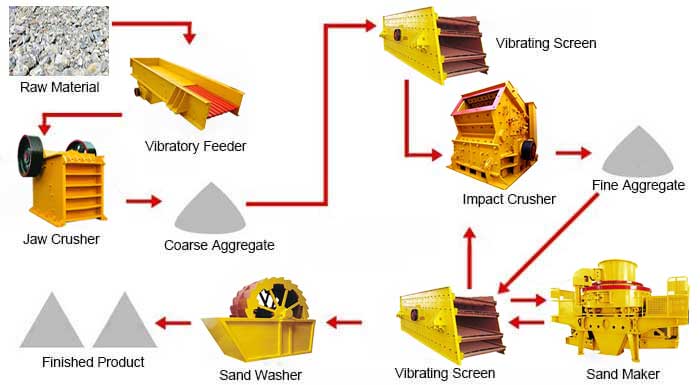 Jaw Crusher VS Impact Crusher
Jaw Crusher VS Impact Crusher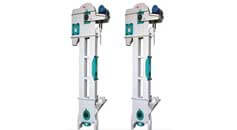 12 Common Bucket Elevator Troubleshooting
12 Common Bucket Elevator Troubleshooting




Guide for Solutions of Problems in double toggle oil lubricant jaw crushers
CCS Jow crushar ..
Production nhi ho rha hai bolder crushing nhi ho pa rha hai
Toggle plate toggle seat change kar diye hai spring v change kar diye hai fir v productions nhi ho rha hai
Kya problem hai …
Kindly share jaw crusher, cone crusher, vsi(baarmac) ,vibrating screen, grizzly feeder, vibro feeder break down failures.